STATE DOMAIN AND RANGE Y-INTERCEPT OF EXPONENTIAL FUNCTION
Subscribe to our ▶️ YouTube channel 🔴 for the latest videos, updates, and tips.
Domain :
The set of possible defined values for the function is domain.
Range :
The set of output values are range.
To find domain and range of the exponential function, first we can find the horizontal asymptote.
f(x) = a (b(x+h)) + k
Here y = k is the horizontal asymptote.
Graph each of the following and find the domain and range for each function.
Problem 1 :
f(x) = 2x
Solution :
To graph the given function, by applying some of the random values of x. We get,
|
x -2 -1 0 1 2 |
y 1/4 = 0.25 1/2 = 0.5 20 = 1 21 = 2 22 = 4 |
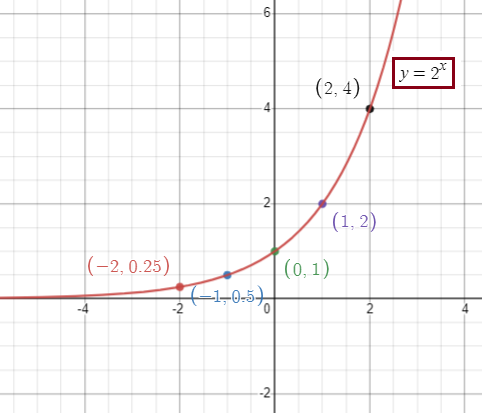
By observing the graph,
The function is defined for all values of x. So, domain is
(-∞, ∞)
The function is defined, for all positive values of y. So, the range is
(0, ∞)
Problem 2 :
f(x) = 2x+5 - 5
Solution :
To graph the given function, by applying some of the random values of x. We get,
|
x -2 -1 0 1 |
y 3 11 27 59 |
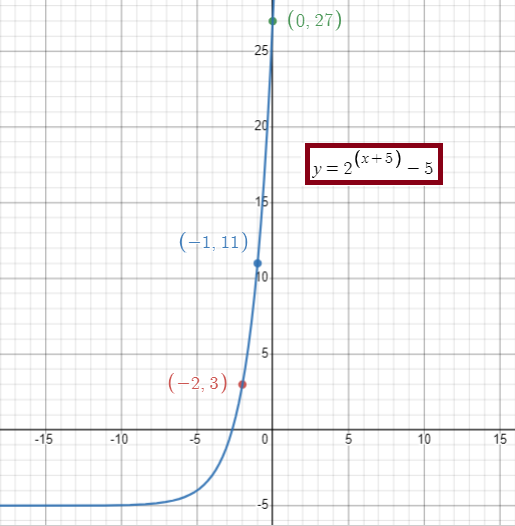
Horizontal asymptote :
y = -5
Domain = (-∞, ∞)
Range = (-5, ∞)
Problem 3 :
f(x) = 3-x
Solution :
To graph the given function, by applying some of the random values of x. We get,
|
x -2 -1 0 1 2 |
y 9 3 1 1/3 1/9 |
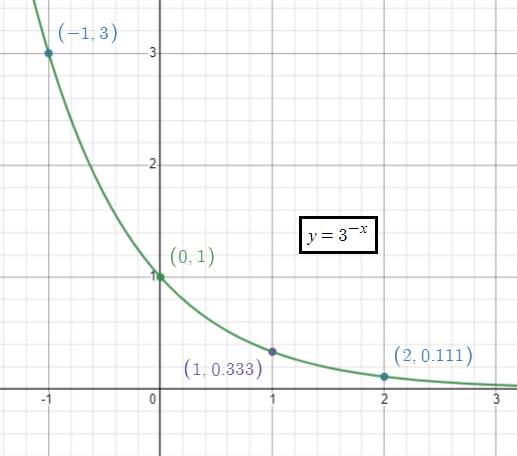
Horizontal asymptote :
y = 0
Domain = (-∞, ∞)
Range = (0, ∞)
Problem 4 :
f(x) = -2-x
Solution :
To graph the given function, by applying some of the random values of x. We get,
|
x -2 -1 0 1 2 |
y -4 -2 -1 -1/2 -1/4 |
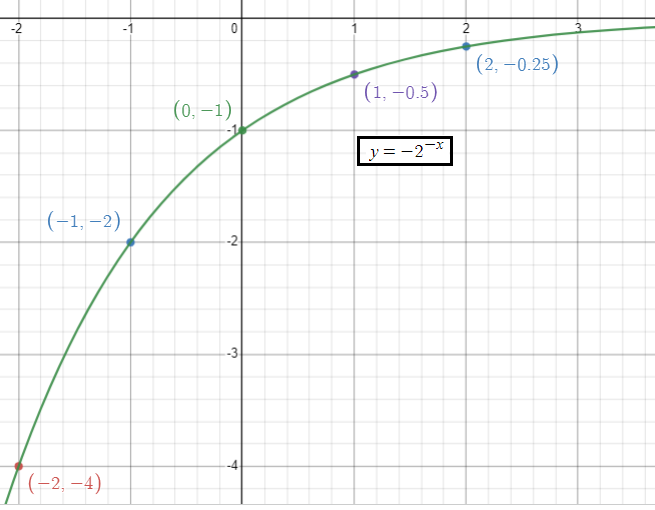
Horizontal asymptote :
y = 0
Domain = (-∞, ∞)
Range = (-∞, 0)
Problem 5 :
Sketch the graph of the function
y = 4 (2)x
Solution :
y = 4 (2)x
The given function is in the form of y = a(b)x
Here a = 4 and b = 2
|
x -2 -1 0 1 2 |
y 1 2 4 8 16 |
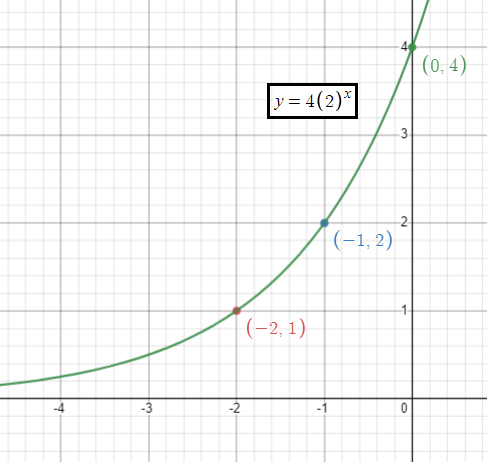
Horizontal asymptote :
y = 0
Domain = (-∞, ∞)
Range = (0, ∞)
Problem 6 :
Sketch the graph of the function
y = 5 (2)x
Solution :
y = 5 (2)x
The given function is in the form of y = a(b)x
Here a = 5 and b = 2
|
x -2 -1 0 1 2 |
y 5/4 5/2 5 10 20 |
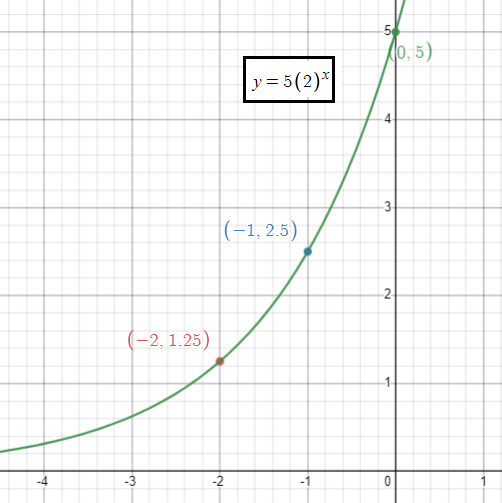
Problem 7 :
Use f(x) = 2x to obtain the graph of g(x) = -2x+3 - 1, find
i) Horizontal asymptote
ii) Domain
iii) Range
Solution :
Comparing f(x) = 2x and g(x) = -2x
It is a reflection across y-axis.
Comparing the function g(x) with
= a(bx+h) + k
a = 1, b = 2, h = -3 and k = -1
We move the graph 3 units to the left and move it down 1 unit.
|
f(x) = 2x i) Horizontal asymptote y = 0 ii) Domain All real values (-∞, ∞) iii) Range All positive values (0, ∞) |
g(x) = -2x+3 - 1 i) Horizontal asymptote y = -1 ii) Domain All real values (-∞, ∞) iii) Range Since it reflection (-∞, -1) |
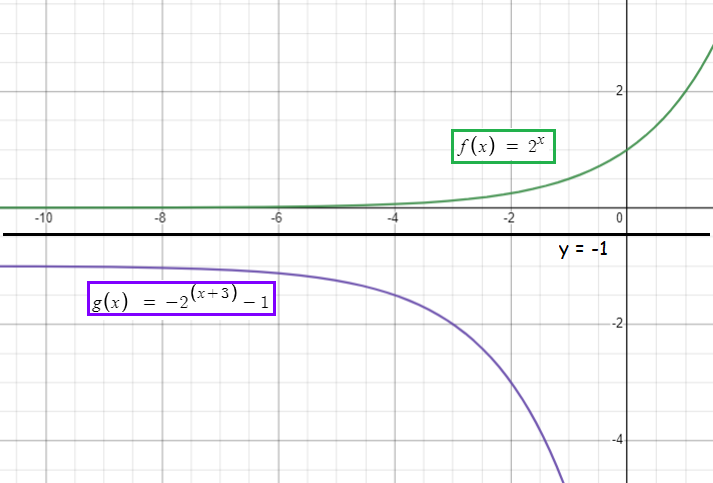
Subscribe to our ▶️ YouTube channel 🔴 for the latest videos, updates, and tips.
Recent Articles
-
Finding Range of Values Inequality Problems
May 21, 24 08:51 PM
Finding Range of Values Inequality Problems -
Solving Two Step Inequality Word Problems
May 21, 24 08:51 AM
Solving Two Step Inequality Word Problems -
Exponential Function Context and Data Modeling
May 20, 24 10:45 PM
Exponential Function Context and Data Modeling